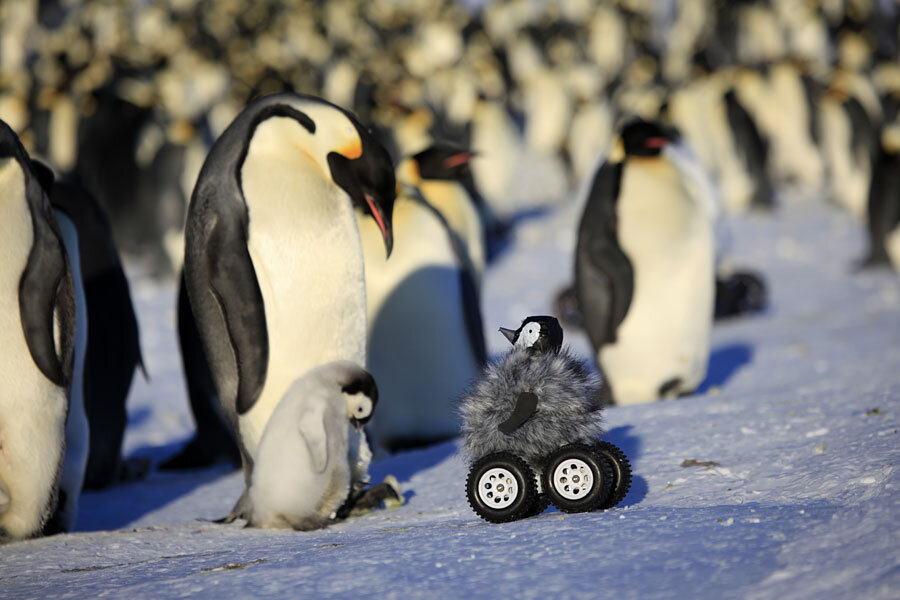Scientists dupe Antarctic penguins with fluffy robot
Loading...
Somewhere on our southernmost continent, some penguins are a little more relaxed than usual.
A colony of penguins in Adélie Land, Antarctica, have been introduced to a penguin-bot, a remote-controlled rover disguised as a chick, complete with fluffy gray fur and black beak. And the international team of researchers that studied the birds found that this bot, the fifth or so version of the rover, was the first to be accepted into the group without reserve.
Scientists had previously discovered that wild animals that interact with humans, even ones to which they have become habituated to, show increased levels of stress hormones. One of the most widely used methods of studying Antarctic wildlife is called bio-logging, where scientists capture animals and attach miniaturized tags to them.
Bio-logging has yielded extremely valuable data about a variety of wildlife, but it also can disrupt animals' normal behavior.
"Yet, wild animals are exposed to increasing disturbance, partly due to the need for larger data sets to rigorously study population trends," the authors wrote in the study, which was published this week in the journal Nature Methods.
An international team of scientists, led by Yvon Le Maho of the University of Strasbourg in France, sought to determine if remote-controlled rovers caused less disturbance than human observers when investigating animals in the wild. They first attached cardio-frequency meters to 34 incubating king penguins and, the next day, measured the heart rates of the penguins when approached separately by a human and the rover.
The researchers found that, no matter the distance between the penguin and the intruder, increases in heart rate were always significantly lower when the rover was the one to come near. The presence of a human often led to the retreat of birds into other parts of their colony and, consequently, disorganization of colony structure.
The team also studied the effects of the penguin-bot on the more-skittish emperor penguin. While the researchers used a less-costumed robot on the king penguins, they sent both the naked and furry versions into the group of emperor penguins. The scientists found that upon the approach of the first rover, 47 percent of birds tested showed no reaction and 25 percent actually demonstrated curiosity and went up to the robot. When the bot that more closely resembled one of their own, every emperor penguin allowed it to come near enough for scientists to get an electronic identification of the usually-timid bird.
Some penguins, both adults and chicks, even tried to make conversation with the chick bot. Instead of scurrying away, they "sang to it with a very special song like a trumpet," Le Maho told the Associated Press. Le Maho speculated that the adults' honks were attempts to secure the rover as a mate for one of their chicks.
By infiltrating the colony without causing significant disturbance, the disguised rover enables researchers to perform population studies and better understand the penguin species' capacities to adapt to changing environmental circumstances. Le Maho's team also carried out a pilot study on elephant seals and achieved similar results.
"The relevance of this technology extends beyond terrestrial populations of seabirds or mammals, as rovers could be adapted for use in aquatic or aerial environments as well for many purposes beyond electronic identification," wrote the authors of the study.






